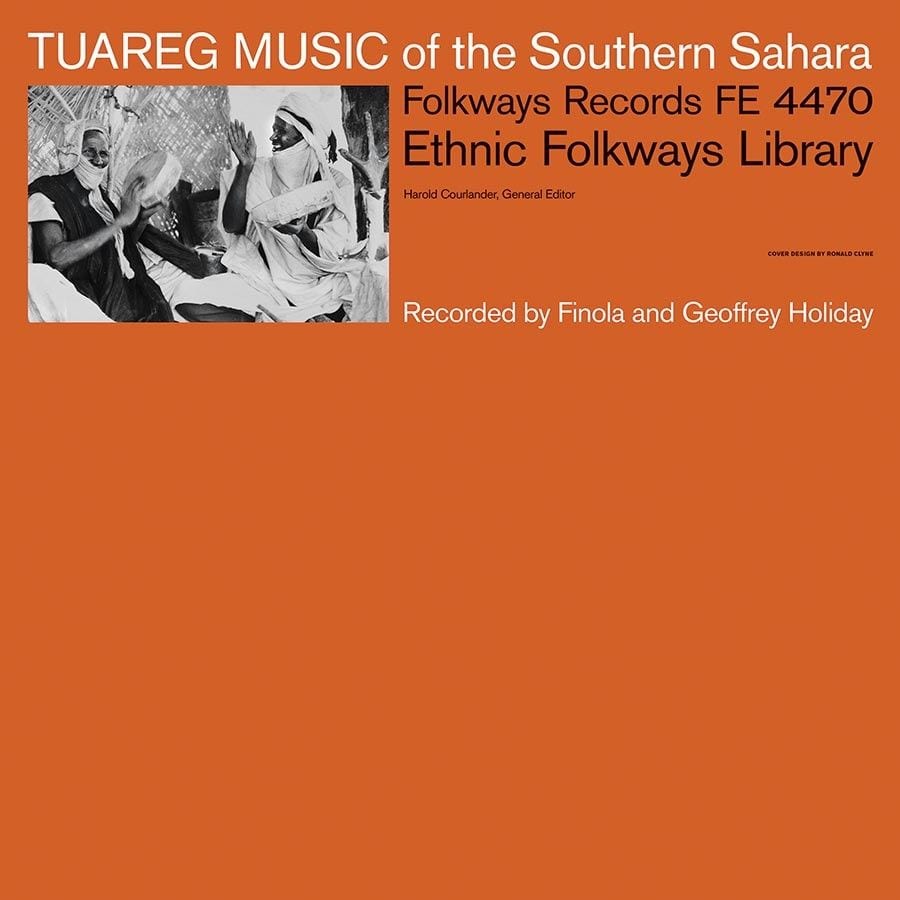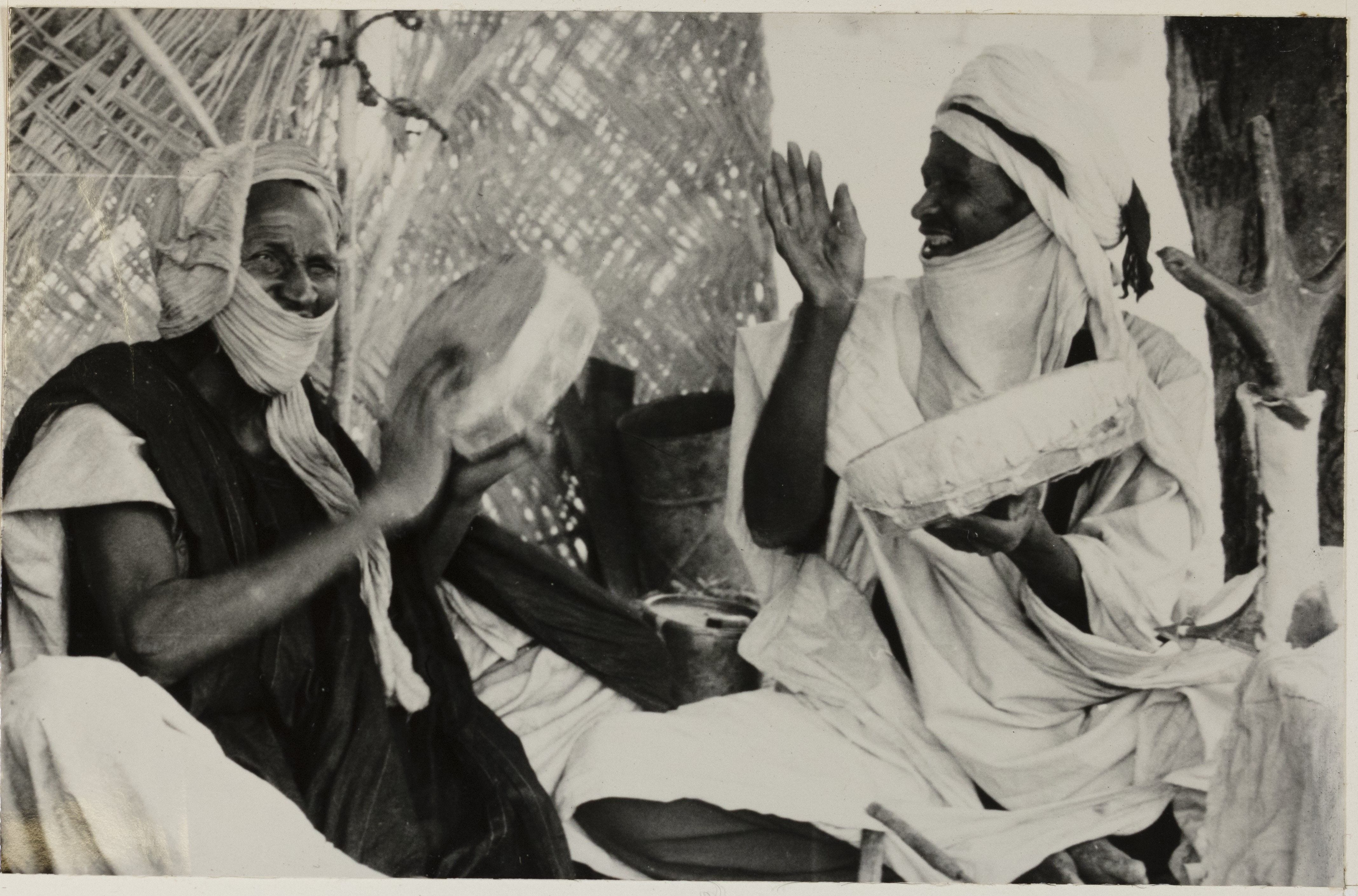
Today, “Tuareg music” is such a common concept in the global music mainstream that the term is already outdated. Kel Tamasheq, one of the names that performers of said music have long used to describe themselves and other members of their transnational Saharan community, is finally beginning to take precedence, and rightfully so. After all, as the liner notes of Smithsonian Folkways’ groundbreaking 1960 release Tuareg Music of the Southern Sahara point out, one possible origin for the name Tuareg is that it comes from the Arabic for “the abandoned of God”.
Now, Folkways reissues Tuareg Music of the Southern Sahara, liner notes and all, as part of its aptly named Smithsonian Folkways Vinyl Reissue Series, and it makes for a fascinating look at the roots of Western musical interaction with the Kel Tamasheq. Recordings of love songs, hunting songs, camel songs, dance music (dance, per the liner notes, having come not from longstanding Kel Tamasheq traditions, but enslaved Africans of other cultural origins), and other performances of men and women give us a chance to understand the distant roots of contemporary superstars like Tinariwen, Bombino, and Mdou Moctar.
Field recordings, of course, are useless in an academic sense without context, which the (at times dated) liner notes of Tuareg Music give us in spades. An overview of Kel Tamasheq culture written by Finola and Geoffrey Holiday begins with an explanation recorded by 19th-century French explorer Henry Duveyrier of the many names the Kel Tamasheq use within their communities. “All of these words derive from the same root,” says the unnamed informant, “the verb iohargh, which means: it is free, it is pure, it is independent.”
To the Holidays, this point is foundational to their discussions of history and culture, as well as to how they frame each recording in detailed descriptions of the form and function. Generally, these dwell on difference, such as how the Kel Tamasheq are different from other North African communities. The Kel Tamasheq, say the Holidays, are “Muslim in name only”, their spiritual practices a “curious mixture of animism and anthropomorphism”, their marriages monogamous “in spite of… lip-service to Islam”. This kind of othering is certainly not unexpected from the 50-year-old notes of researchers, and it would, perhaps, be disingenuous not to include them in the reissue. For Smithsonian Folkways, though, it seems an oversight not to include the viewpoints of contemporary scholars reflecting on the original Holiday analyses.
Musically, this is an outstandingly atmospheric collection, instrumentals and songs alike raw and relatively clear (though the audio quality is expectedly and inevitably vintage). A history of nomadic movement means that the sonic emphasis here is on the portable: the violin-like imzhad, tendi drums and other percussion, and above all, voices. A sense of Kel Tamasheq group life is at the forefront, the sonic presence of whole groups audible in most recordings. This visceral sense of spatial dynamics is what makes these field recordings so valuable for a broader listening public.
Photo: Tuareg men playing tendi / Courtesy of the Moses and Frances Asch Collection / Courtesy of the Smithsonian
Tuareg Music of the Southern Sahara makes sense as a reissue, given the reliable popularity of Kel Tamasheq popular music artists and given the range of information the recording communicates through sound, word, and the occasional exceptional black and white picture. It would make a little more sense, perhaps, with updated notes on Kel Tamasheq culture – maybe even by a Kel Tamasheq individual. With that said, including the original liner notes of Tuareg Music of the Southern Sahara does allow for reflection on the history not just of the Kel Tamasheq, but of Western humanities-centered fieldwork, which has its place. The sound, more importantly, is still immersive, still impressive half a century later, and it’s thrilling to think of what old lessons the team at Smithsonian Folkways plans to teach us through music as the vinyl reissues continue.


